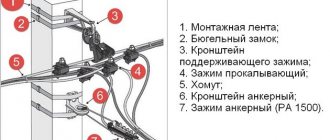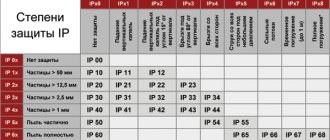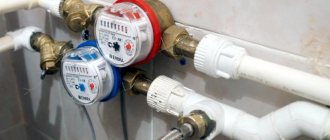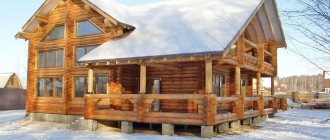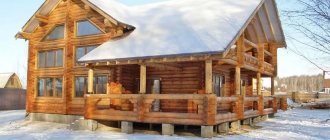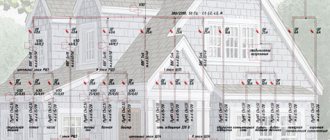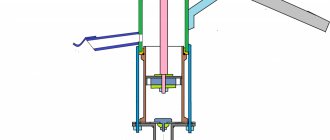If you find yourself here, then you have a task: to introduce electricity into your private home. And of course there are many questions in my head: which cable to choose? Which introductory machine should I install? Which counter should I choose? And in the end, how to combine all this into one properly working system. We would like to share our experience of how we carried out air entry into our country house. Well, now let's look at all our steps and thoughts in order. What we had: on the street there was a concrete pole with main wires, aluminum wires were connected from it on twists, then they were connected to the output wire at the gander on the roof.
It was necessary to replace all this old stuff with something modern, and the best option to do this was using 2x16 SIP wires.
Preparation
The scheme for the correct introduction of electricity begins with the choice of a specific type of electrical cable supply to the house. There are only two types: underground and air methods. Each of these options has its own advantages and disadvantages.
Air cable entry
It is worth noting that an air cable entry is perfect if you do not have extra money and time to install an electrical network. However, you need to understand that not every house meets all the requirements that apply to the aerial type of electrical cable entry.
- The most important requirement is the height at which the house should be connected to the electrical network. The height, according to legal regulations, must be at least 3 m; some private houses do not meet this requirement.
- You can use a little trick: a reliable pole is mounted, it is attached to the external wall of the building, where it will be more convenient to supply the cable from the power line pole.
- Next, a distribution panel is mounted to this pole, to which the electrical cable is connected. Thus, if the height of the building does not meet the standards, you can use a tall pole by incorporating it into the structure of the building, bypassing the restrictions.
- It is much easier if the house has the required height, then a distribution panel is installed on one of the external walls of the house, into which the cable coming from the power line is connected.
When directly entering the electrical cable from a pole, the distance from it to the building should not be more than 10 meters. If the pole is located further away, it is necessary to use a support that is installed between the building and the main pole, this way you can stretch the cable to the desired area.
The distance from the support to the main power transmission pole should not exceed 10-15 meters.
This method of introducing an electrical cable into the house has its limitations. First of all, suspended wires interfere with large vehicles and limit the access of large equipment to the house, which is why the height requirement must be observed. It is advisable to place the cable at a height of 3 meters or more so that large equipment can freely approach the house.
Also, because the cables are exposed, they are exposed to weather and physical influences, creating a risk of damage.
Underground cable entry
Electricity can be supplied to a wooden house through an underground trench. This method is more labor-intensive and requires additional funds, but it is safer.
Preparing to install a cable in this way begins with choosing the type of cable. It is recommended to use reinforced or armored, regardless of power. This is due to the fact that underground it will be exposed to moisture and other factors that can contribute to corrosion and damage to the cable.
- The recess should be 70 cm if a layer of additional protection in the form of red brick or concrete slab is used. Initially, a layer of sand is laid out on the bottom, after which a protective layer is laid out.
- If there is no need to create additional protection, the recess for the cable should be 100 cm. The cable is inserted through a metal tube that rises at least 2 m above the ground surface.
- This tube should fit tightly to the power line pole; the cable branch from it goes into the pipe through which it passes and along the trench. Next, also with a pipe, the outlet is carried out into the building, to the distribution panel. There are 2 ways: outside or inside the building.
It is recommended to choose not the one that is more convenient, but the one that is safer. It is ideal if these 2 factors can be combined when choosing a supply.
Change No. 3: The list of grounds for connecting to a preferential tariff has been expanded
We remind you that there is currently a reduced tariff for connecting to electrical networks - only 550 rubles. (Clause 17 of the Decree of the Government of the Russian Federation No. 861 of December 27, 2004).
In order to take advantage of the discounted rate, the following conditions must be met:
- device power consumption - no more than 15 kW;
- the distance to power lines with a voltage level of up to 20 kW is no more than 300 m (in the city) or 500 m (in the village).
From March 2021, owners of generators with a capacity of up to 15 kW can connect at a reduced rate (RF Government Decree No. 299 of 03/02/2021).
Owners of such generators submit an electronic application to the supplier and enter into an electricity purchase and sale agreement with him. The energy generated by the generator will be counted using a special bidirectional meter and will be included in mutual settlements. Please note that income from the sale by an individual of such electricity is exempt from personal income tax (clause 28.1 of article 217 of the Tax Code of the Russian Federation).
Recommendations
According to the rules, you cannot insert a cable through a structure that could catch fire. Such materials include plastic, wood and other materials based on them.
- To make cable entry into the house safe, you need to switch to a conductor that does not burn. Copper is most often used.
- Wires in a special braid can be routed through walls made of wood and other flammable materials to the shield.
- It is recommended to initially make the hole for the wire wider in diameter than the wire itself.
- Then insulate the inside with non-flammable conductors. This will provide an additional level of security.
It is also worth considering that running a cable through, for example, a wooden wall is only possible if the cable is placed in a steel pipe. The thickness of the walls is strictly regulated; it should be approximately 4 times greater than the diameter of the wire itself.
How cable tension is done
After fixing the conductor on special rollers, begin to tension it. This requires the following tool:
- hand winch;
- stretching device;
- dynamometer.
The hand winch is attached to the nearest support using anchor bolts, and the cable is pulled along it using a tensioning device. The tension force is regulated by technical documentation and is controlled using a dynamometer.
Photo of introducing electricity into the house
Share with friends
Cable laid over the air
The main type of installation of the input cable is its installation by air. Air input has its advantages:
- Minimum labor costs.
- It takes a short amount of time to connect your home. It is rare that such work takes more than two hours.
- Low cost of consumables: anchor bolts or clamps, special brackets, insulators.
- Possibility of quick troubleshooting, even if the entire cable needs to be replaced.
The following types of cables are used for aerial installation:
- SIP cable is a self-supporting insulated wire.
- Non-insulated, material - aluminum.
- Bare aluminum with steel core.
Installation cost
Installing electrical wiring is an important issue. A correctly drawn up house wiring plan is a guarantee of safety. If a person has never encountered such a problem in his practice, then it is better to seek help from trusted specialists.
To do this, you should familiarize yourself with the approximate prices for this type of service:
Initially, you should be prepared for the fact that installing electrical wiring in a house will cost much more than in an apartment.
Some examples of input cable protection
The best protection for the input cable is its insulation and the method of laying it in a place where no one can reach it. This can be a method of laying underground or by air. To prevent the harmful effects of natural conditions, the conductor can be laid in a special PVC pipe, but few do this, due to the significant increase in the cost of the structure.
To protect the wire in the wall, it is best to use a metal pipe. A replacement for metal can be PVC, which has a more affordable price.
What is an input device cabinet
The input device can be briefly classified as all switching and other power control devices that are installed directly at the main line input. For ease of installation of such devices, special cabinets are used, which have special fastenings.
In the input device cabinets the following can be located:
- circuit breakers;
- switches;
- circuit breakers;
- counters.
- measuring instruments.
Conclusions: should you choose an overhead or cable line?
An air line is suitable for you if:
- You want to significantly save time and money on input installation.
- You don't want the wire to be stolen by intruders.
- A hanging wire will not spoil the appearance of your site.
- You don't want to dig a trench or hire people to do it.
An underground cable line is suitable for you if:
- The appearance of your site is important to you.
- In your area, there are strong winds and wires often break due to falling trees.
- You have large-sized agricultural equipment, and you need to power several buildings in your yard.
- The power line support is located more than 25 m from your home, and you do not want to spend money on installing an additional support.
How to supply electricity to a distribution panel
When using an ordinary conductor, it is enough to simply connect it to the main circuit breaker, from which the electricity will then go to other consumers. But when using an SIP or an insulated conductor, you should install a switching unit - a separate place for the transition of the input cable to the one that will be routed to the panel.
It is most convenient to use a branch clamp for this - 2 copper plates, fastened to each other with four bolts and placed in a special plastic box.
Administrative and legal nuances
The supply of electricity to a private home must be carried out by electricians with a certain access group.
To introduce electricity into the premises, the owner must obtain permits from the energy supply. The basis for the permit is the PVE project, which describes the internal electrical network in detail and provides calculations of consumer power. After this, the parameters of the allocated power and the consumer limit are set. According to the PVE, technical conditions are determined - connection method, communications features, engineering aspects.
Electrical distribution teams, the owner or a licensed contractor can connect the house to electricity.
Required documents
Example of a response to an application for technological connection
The property owner sends a request to the selected network organization. The company reviews the application within 15 days. After a positive response, the following documents are prepared:
- application for technical connection in a unified form;
- diagram of power receivers;
- copies of documents on the right to a building or land plot;
- an application indicating the citizen’s full name, passport details, location of receivers, time frame for creating the project and putting the line into operation, name of the provider, permit for construction work.
After reviewing the documents, the energy provider sends a contract with technical conditions. The applicant remains to sign it and send it to representatives of the network organization.
If the site meets the requirements of the technical conditions, work on its territory is carried out at the expense of the owner. Events outside the allotment are paid for by the network company. Upon completion, the energy sales company connects the premises to the network after a control inspection.
Let's analyze the visual diagram in detail
The apartment's power supply is three-phase 380 Volt. The electrical wiring is planned to be five-wire with three phase working conductors (L1; L2; L3), a neutral working conductor (N) and a protective conductor (PE).
A three-phase input circuit breaker (8) is installed at the power supply input. It disconnects three working phase conductors from the external power supply.
The neutral working conductor is connected directly to the electric meter (9). The electric meter (9) is three-phase.
The electrical wiring of an apartment or house is protected by a general circuit breaker (6). The general circuit breaker is 4 (four) contact. It protects the electrical wiring of the apartment from short circuit current and network reboot. Also, using a circuit breaker, you can forcibly disconnect all electrical wiring of an apartment or house from the power supply in order to carry out technical work.
In the electrical panel (1), the electrical wiring is divided into separate power supply groups. The division into groups occurs on three switching buses (2). Phase wires from a common circuit breaker are connected to these three separate buses. The buses are called phase. The zero working conductor is connected to the zero working bus (2 A). A separate bus called the ground bus (2B) is intended for connecting protective conductors.
The same diagram in a NEW window. Format: 752×726 pixels.
Note: When completing an electrical panel, it is better to purchase tires made in protective housings. In general, switching bars, sometimes called blocks, are manufactured in protective dielectric (non-conducting electricity) cases and are open. Since the electrical panel in question should be installed in a residential area to protect against accidental contact with the live busbars, it is better to use the busbars in a protective casing.
One more thing. In a visual diagram of the electrical panel, the contact bars of the phase (2) and neutral (2A) conductors are shown together. During actual installation, it is better to space these tires across the panel. Install the phase busbars at the top of the electrical panel housing, the zero operating busbar and the grounding busbar on the right and left or at the bottom of the electrical panel housing. Read the article: Installing a distribution board.
Power supply, household appliances and equipment of an apartment or house (7) is divided into groups. The electrical wiring of each group is protected by a common group differential circuit breaker (4). The differential circuit breaker is a circuit breaker and an RCD (residual current device) in one housing.
Important! Electrical wiring for a three-phase power supply should be evenly distributed across the three phases. Each phase must power electrical equipment with the same total power. Uneven distribution or phase imbalance will lead to failure of household electrical appliances, and possibly to emergency situations. Which, of course, is unacceptable.
From general group differential circuit breakers, each electrical circuit of the group is protected by single-pole circuit breakers (5). The exception is a separate dedicated group for powering the electric stove (3). For the electric stove, the circuit breaker protects two plus (phase, zero).
All electrical wiring must be carried out using a three-wire electrical cable with a third protective, grounding conductor. Each socket in the room has a grounding contact, and even the lighting of the room is planned with protective grounding of the housings. In our opinion, PUE (electrical installation rules) is of course unnecessary, but this scheme fully complies with IEC (International Electrotechnical Commission) standards. However, you need to remember that the power supply is carried out according to the TN circuit, with a solidly grounded neutral of the substation transformer.
Specifics of using SIP
Using a wire in an overhead line
You can install a SIP cable on a support or facade, making branches and other connections. When working with wire you must:
- pre-install the VLI supports by securing the clamps to them;
- roll out by installing rollers using a special belt or hooks. The wire is pulled to the outer supports with a drum. They work manually with a cable leader;
- secure the electrical conductor to the supports. The load-bearing core is fixed with an anchor clamp;
- tension the cable using a hand winch with a grip amplifier;
- select a 2-wire SIP-4 for a single-phase network, and a 4-wire SIP-4 for a three-phase network.
The tension must be done smoothly, without distortions, until the head of the torque wrench breaks.
